A collection of items recovered from the wreck of the Carpathia, with significance to the story of the rescue of Titanic's passenger and crew, was sold at Henry Aldridge & Son's Auction of Titanic, White Star, Ocean Liner and Travel Memorabilia on Saturday 17 April 2021.
The Carpathia was travelling eastbound from New York to Gibraltar and the Mediterranean when she picked up the Titanic's distress signal. The telegraph would have been used to transmit the order from the bridge to the engine room to set the engines to full-ahead, in its attempt to reach the Titanic in time to rescue any survivors.
As Captain Rostron recalled:
The Carpathia was a fourteen-knot ship, but that night for three and a half hours she worked up to seventeen knots.
RMS Carpathia
The Carpathia was a Cunard Line transatlantic passenger steamship built by Swan Hunter & Wigham Richardson in Wallsend, Tyne and Wear, England in 1903. She is best known as the ship which rescued all of Titanic’s survivors. In the early morning of 15 April, 1912 the Carpathia’s radio operator, Harold Cottam, received a message from Titanic that it had struck an iceberg. After bringing the message to the ship’s master, Captain Arthur Rostron, Rostron took immediate steps to steam to Titanic’s reported position:
One of the first things I did, naturally, was to get up the chief engineer, explain the urgency of matters and, calling out an extra watch in the engine-room, every ounce of power was got from the boilers and every particle of steam used for the engines, turning it from all other uses, such as heating.
After navigating around an ice field, Carpathia reached Titanic’s position at about 4:00 A.M., a little more than an hour and a half after Titanic went down. Carpathia arrived in New York on 18 April, 1912 where Titanic’s survivors disembarked and the Carpathia resumed its regular voyage to the Mediterranean.
After being pressed into service during World War I by the British Admiralty, Carpathia was sunk on 17 July, 1918 by three torpedoes fired by U-55 of the German Imperial Navy around 120 miles west of Fastnet.
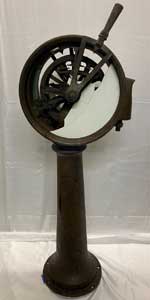
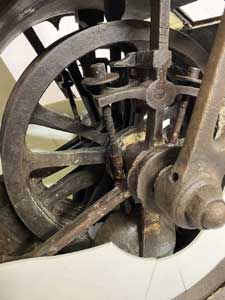

(Photos courtesy of Henry Aldridge & Son)
Salvage of the Carpathia Artefacts
Carpathia was discovered lying in an upright position at a depth of about 500 feet of water 120 miles west of Fastnet, Ireland. Exploring it posed some difficulty. While there are rare cases of commercial divers briefly reaching depths of 1000 feet, 500 feet represents the more realistic limit of human tolerance for deep sea divers, imposing a heavy decompression penalty of five hours.
Numerous dives were made in August and September 2007 to recover Carpathia’s artefacts from the debris field. Over 90 artefacts were recovered including some involved in Carpathia’s rescue of Titanic’s survivors. Such are the artefacts offered here. The following four lots are unparalleled:
- An engine order telegraph from Carpathia’s bridge used to signal the engine room;
- a lamp which would have lighted the way for survivors in the dark;
- a port hole which still opens and closes
- a six-inch wide floor tile.
R.M.S. Carpathia Engine Order Telegraph
Today, modern vessels have a throttle on the bridge for the direct control of the engines without any involvement of engine room personnel. In Titanic’s time, bridge personnel would have to move the pointer on the telegraph to the desired speed. This would trigger an “alarm” bell in the engine room which signalled an incoming engine order from the bridge. In the case of the rescue of the Titanic’s surviving passengers and crew this Ship’s telegraph was an integral part of one of the most famous events of the 20th century. Captain Rostron set a course for Titanic upon receiving the distress calls. He then sent for his chief engineer and told him to “call another watch of stokers and make all possible speed to the Titanic”.
The pointer of the engine room telegraph would move to the position on the dial which was selected by the bridge such as Full Ahead, Half Ahead, Slow Ahead, Stop, Slow Astern, etc. The engineers would signal receipt of the order by moving the engine room pointer lever to the same position which would trigger a bell to ring in the bridge’s telegraph. The engineers would then bring the engines to the desired speed. In an emergency, such as an order for an emergency stop, bridge personnel would bring the lever to the “stop” position three times. This would result in an equal number of rings in the engine room telegraph signalling an urgent request.
The telegraph was manufactured by A. Robinson & Co. Ltd, Liverpool & Glasgow with maker’s plaque present. The telegraph top was recovered on 29 August 2007 by a deep wreck diver using a lift bag. The base was recovered on 28 August 2007 with a crane from the Janus II research vessel. The artefact exhibits expected pitting, dents and losses. The door to the base is attached and bulges slightly. Some of the original glass is present and intact. Four later mounts have been added to the base for display purposes. Internal workings including the alarm bell are present as is one lever. Approximately 48ins tall. Quite simply an exceptional piece of memorabilia and was an essential part of the Carpathia’s endeavours to reach the Titanic’s survivors.
The telegraph is predicted to raise between £50000–£80000.
A bronze porthole from the Carpathia valued at £20,000-£30,000
(Photos courtesy of Henry Aldridge & Son)
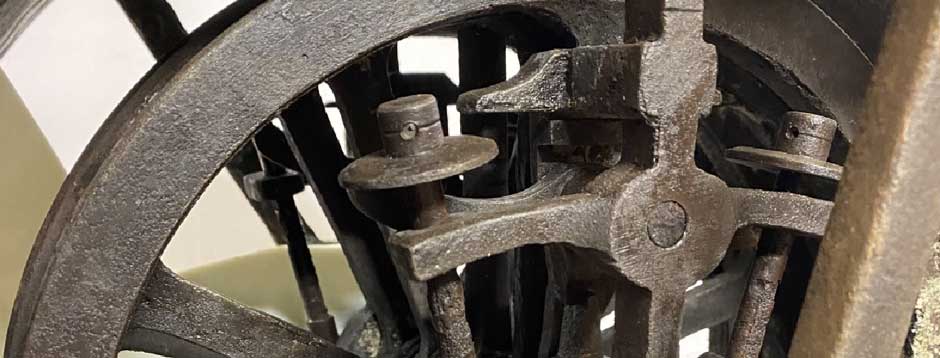
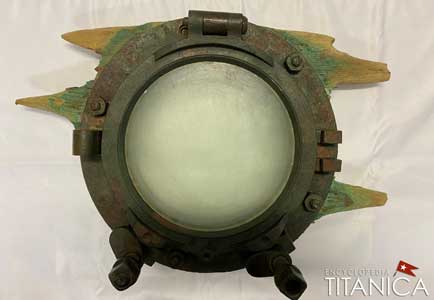
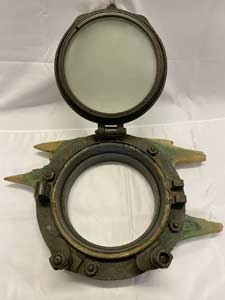

Comment and discuss